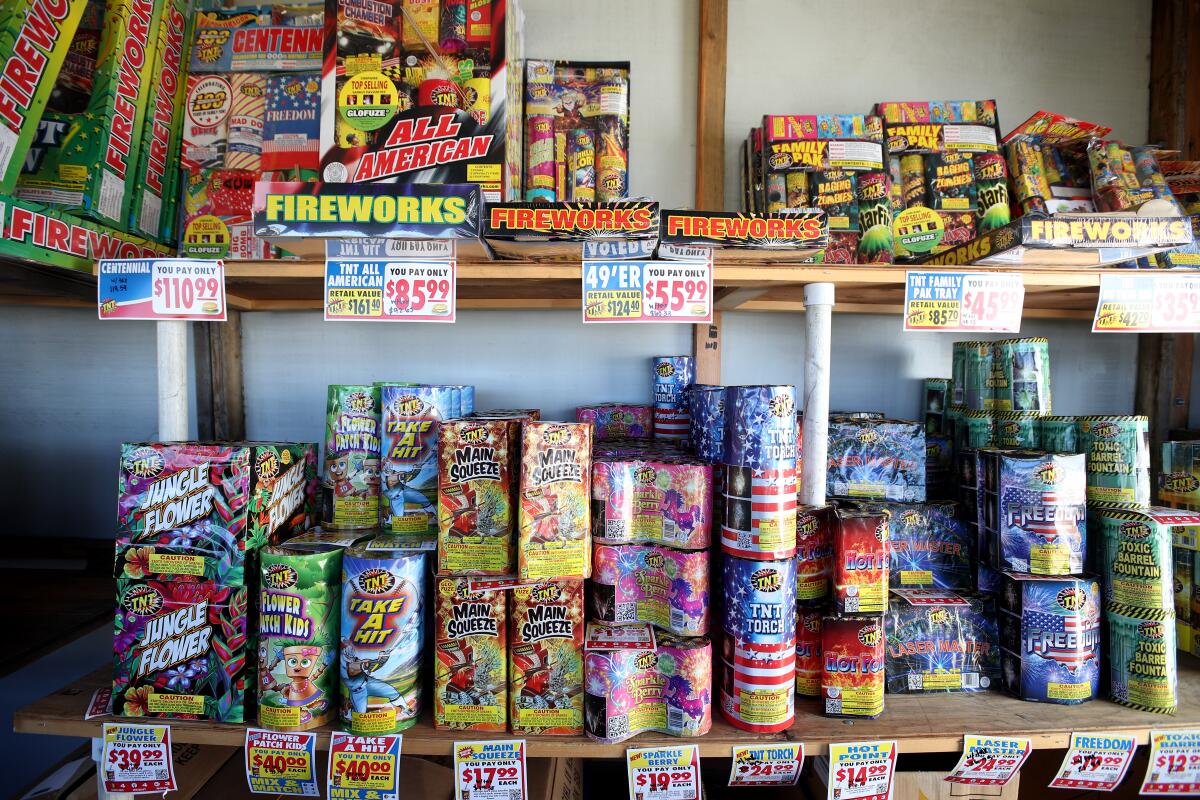Household fireworks spread hazardous particles in Southern California air, study finds

- Share via
Household fireworks spread hazardous materials into the air, especially in minority and lower socioeconomic communities in Southern California, UC Irvine researchers have found.
As the country celebrates Fourth of July this weekend, fireworks will spray fine particles of barium, copper, magnesium, strontium and other elements into the air, which can be inhaled, absorbed into the lungs and passed on to tissues throughout the body. Fireworks get their colors from these chemicals and metals.
The issue is more prominent in Southern California communities where regulations are less strict than the northern part of the state. Cities in Orange County that allow “safe and sane” fireworks include Anaheim, Buena Park, Costa Mesa, Fullerton, Garden Grove, Huntington Beach, Santa Ana, Stanton, Villa Park and Westminster.
UC Irvine professor Jun Wu, co-author of the study that was released this week, said the emissions could potentially pose risks to respiratory, cardiovascular and neurological health. She said the noise of the fireworks may also trigger mental health issues.
Wu said these household fireworks include seemingly innocuous sparklers and other fireworks that can be purchased from stands in the county. She also said that the type of fireworks launched at shows or at Disneyland may spread the same materials, but they are less concentrated because the fireworks detonate at a higher elevation.
“The household level can affect more locally because you’re doing this on your property,” she said.
For the study, researchers analyzed data collected from PurpleAir sensors, a low-cost, air monitoring network throughout the state. Researchers found that there was a steep increase of pollution from household fireworks last year when compared to 2019, likely due to the COVID-19 lockdown causing fireworks shows to be cancelled, leaving many to celebrate the holiday at home.
Orange County experienced a 71% increase in fireworks emissions in 2020, the seventh most among all 58 counties in California. Los Angeles County experienced the highest emissions around Fourth of July in 2019 and 2020.
The researchers highlighted the finding that fireworks pollution was two times higher in communities with lower socioeconomic status and larger minority-group populations, and higher asthma rates.
“This work highlights the important role that policy and enforcement can play in reducing fireworks-related air pollution and protecting public health,” Wu said. “As there is a patchwork of different restrictions and regulations regarding fireworks in our state, it’s clear that a more coordinated approach would help people breathe easier during times of celebration.”
Wu said the particles can float in the air for up to a week after Independence Day, so the public should make an effort to minimize exposure to the pollution.
“Those with children with asthma and people who are more susceptible will need to pay more attention to this,” Wu said. “They can do some preventive measures, such as wear a mask to reduce the fine particulate matter exposure, close their doors and windows during July Fourth. Also, if they have an air filter, they should use that at home. And I really hope we can reduce the household fireworks.”
All the latest on Orange County from Orange County.
Get our free TimesOC newsletter.
You may occasionally receive promotional content from the Daily Pilot.




